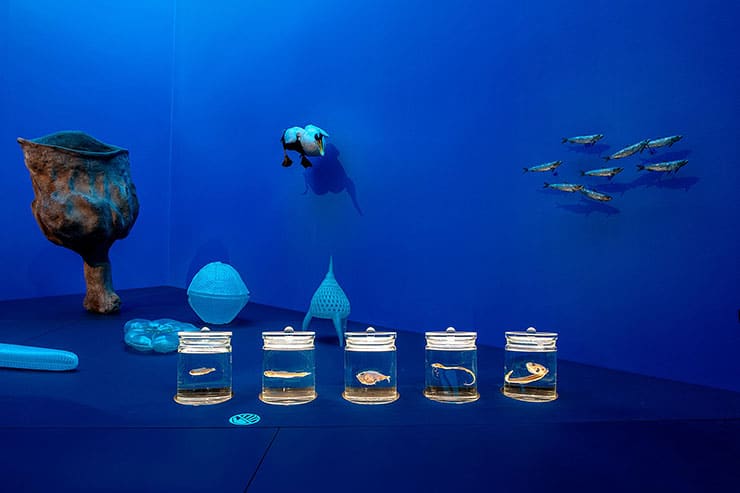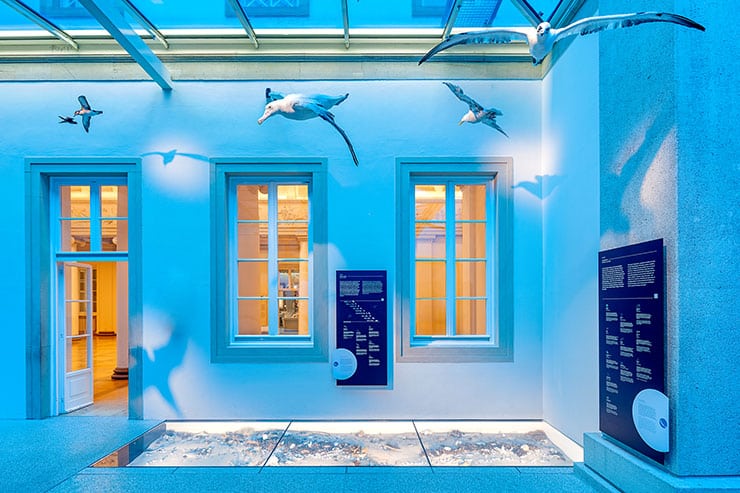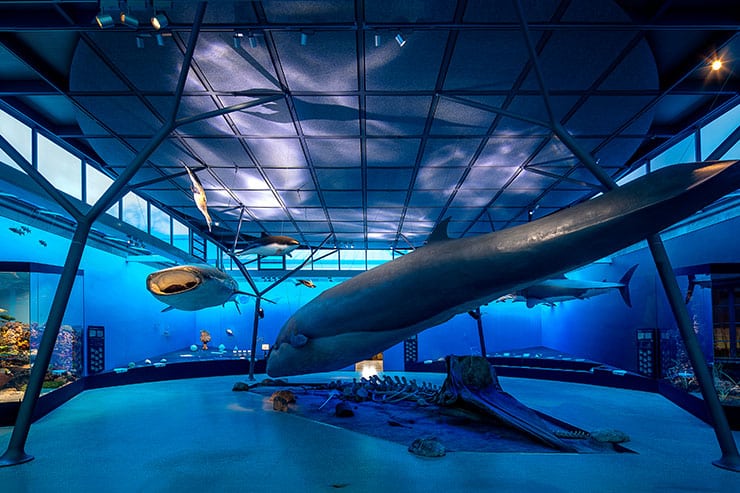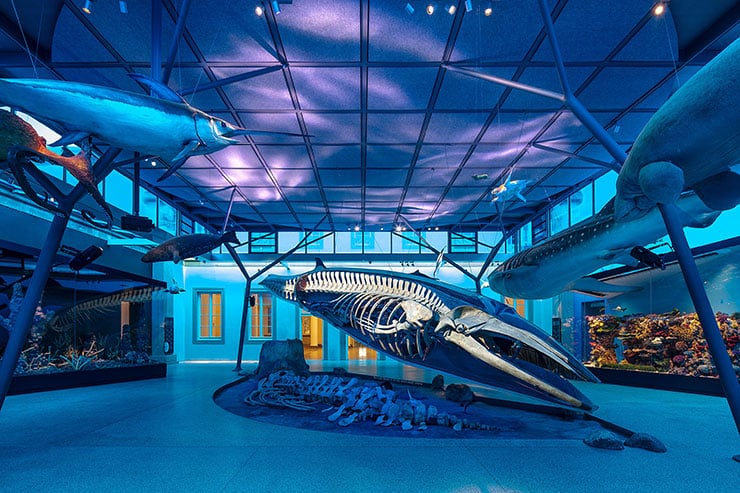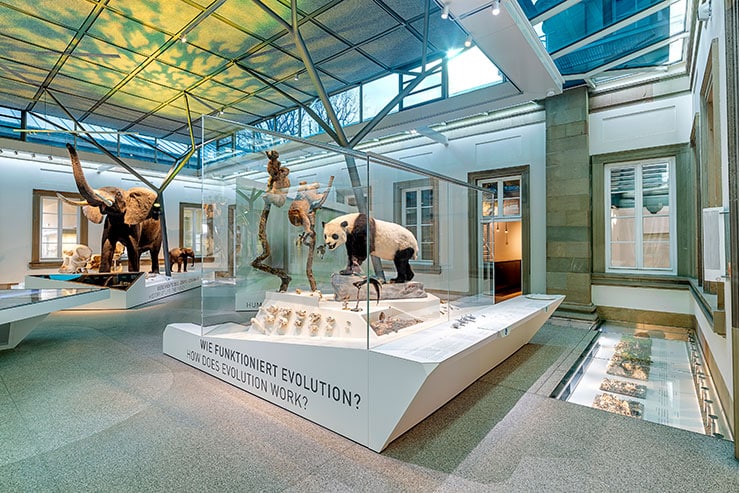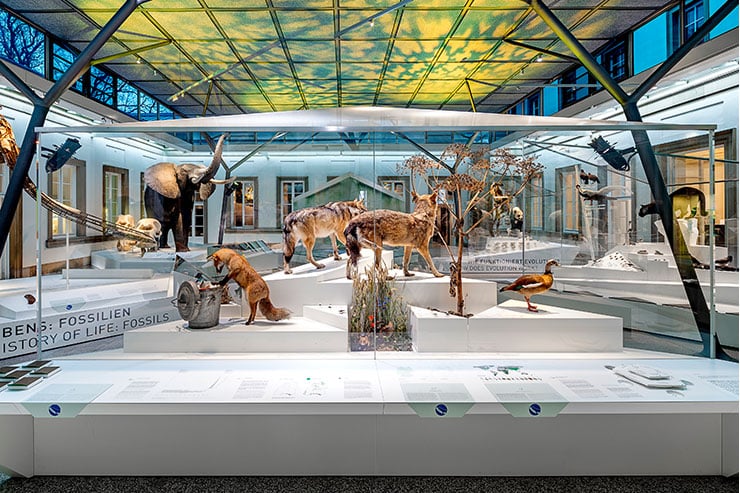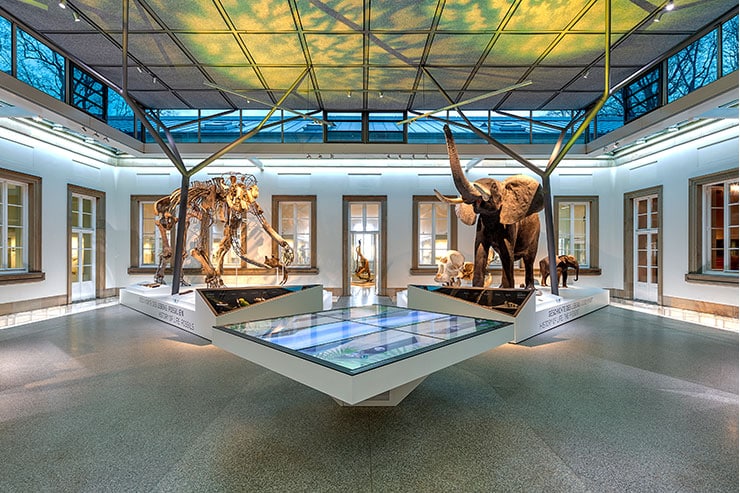- ABOUT
- JUDGING
- CONTACT
- MORE
- 2024 Entries
- Installations 2024
- Past Winners
- Subscribe
- [d]arc directory
- arc magazine
- darc magazine
Museum of Natural History, Germany
ProjectMuseum of Natural HistoryLocationStuttgart, GermanyLighting DesignBelzner Holmes & Partner Light-Design, GermanyArchitectArchitekturbüro Räuchle, GermanyInterior DesignRalph Appelbaum Associates, USAClientMuseum of Natural History in StuttgartLighting SuppliersEigenart, CoemarPhotographyDaniel Stauch
In February 2024, the State Museum of Natural History in Stuttgart unveiled its newly designed Marine and Evolution Halls, housed in the former courtyards of Rosenstein Castle. The interactive exhibition, created by Ralph Appelbaum Associates, features over 1,000 exhibits that showcase evolutionary processes and species diversity.
The halls are designed as large walk-in dioramas, each with striking centrepiece objects. The Marine Hall displays a 13-metre-long model of a female sei whale, while the Evolution Hall features an African savannah elephant specimen and a 100,000-year-old European forest elephant skeleton. Additional exhibits are showcased in modern prism-shaped cases, supported by multimedia and interactive stations that enhance the visitor experience.
Belzner Holmes & Partner Light-Design developed the lighting solution for the redesign. The aim was to create an atmosphere that defines the exhibition spaces, highlights the exhibits, and integrates informational displays seamlessly into the spatial images for clarity and harmony.
Natural daylight has been significantly reduced in the halls. In the Evolution Hall, only a narrow daylight slit along the historical façades is retained, providing targeted grazing light. In contrast, skylight strips in the Marine Hall are tinted dark blue, creating a soft blue ambient light that envelops the space.
Exhibit lighting is carefully harmonised, with wide floodlights providing uniform ambient illumination that mimics daylight. Narrow-beam spotlights offer warm-toned accent lighting, highlighting the unique features of the exhibits.
Both halls feature underlit ceilings to create a cohesive spatial experience. In the Marine Hall, a water effect is projected onto the ceiling, while dynamic leaf patterns adorn the ceiling of the Evolution Hall. The smallest spotlights, resembling birds or fruit, are positioned on tree-like supporting structures, from where they illuminate the exhibits. These structures also hold the effect lighting devices used for underlighting the ceilings. Additional mounting points for luminaires around the ceiling’s perimeter ensure the large exhibits in the Evolution Hall are illuminated from all sides.
Integrated lighting is used in the enclosed display cases, which showcase dioramas such as a black smoker, a coral reef, and extinct species. The cases feature light trenches with linear light sources for general illumination and small spotlights for targeted accent lighting. Louvres are installed to prevent glare from the light sources.
The lighting control system allows for continuous and subtle adjustments to the lighting, enabling dynamic shifts in atmosphere. The system also offers precise regulation of the effect lights, further enhancing the atmospheric design of the space.
The sustainable lighting system uses durable, low-maintenance LED technology. The flexible mounting system ensures the lighting can be easily adjusted during future refurbishments, adapting to changing exhibition requirements. This flexibility promotes sustainable operation and high adaptability.
In summary, the Marine and Evolution Halls at the State Museum of Natural History in Stuttgart exemplify innovative exhibition lighting design. Thoughtful lighting, controlled daylight reduction, and advanced illumination techniques combine to create an immersive environment that captivates visitors and accentuates the exhibits.
